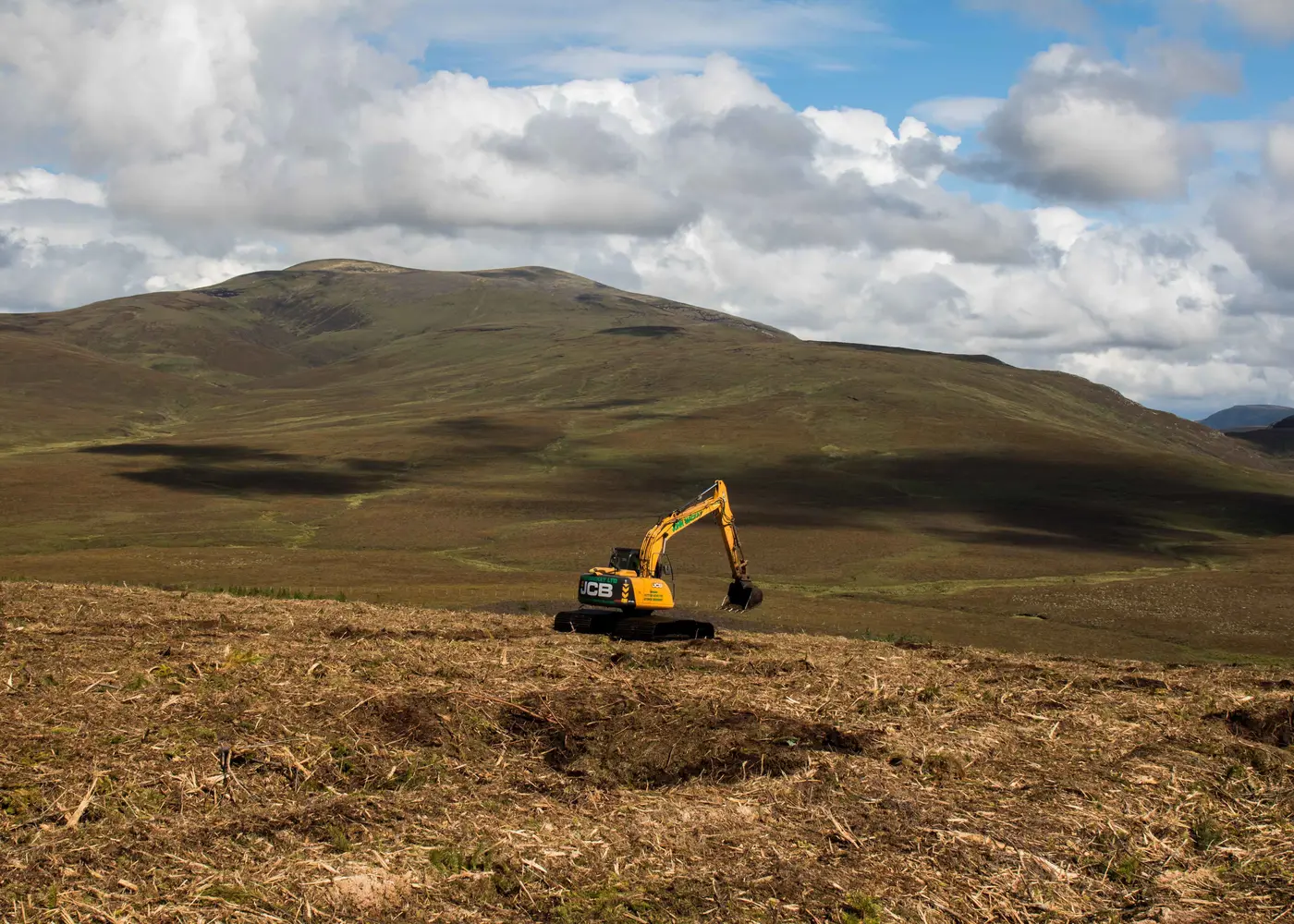Peatland restoration
Peatland restoration

At its core, peatland restoration is restoring the habitat to its best possible condition. The goals of every restoration project involve the following areas; habitat, carbon store, soil conservation, and hydrological behaviour.
Learn about how we restore peatlands
Once the trees have been cleared, we shift our focus to re-wetting the peatland. We do that by installing peat dams in the drains, and often flipping stumps, and smoothing the ploughed ridges and furrows.
One of the great things about restoring bogs is that you can see a significant impact quite quickly. We often see the return of plants such as cotton grass within a year, and once sphagnum moss comes back, we're really on the way. The moss is a sign that the bog is back to functioning effectively and starting to once again capture and store carbon in the peatland.

Sphagnum moss (left) is one of the key species we look for after restoration as it prefers bog habitats. Cotton grass (right), is one of the early indicators of restoration.